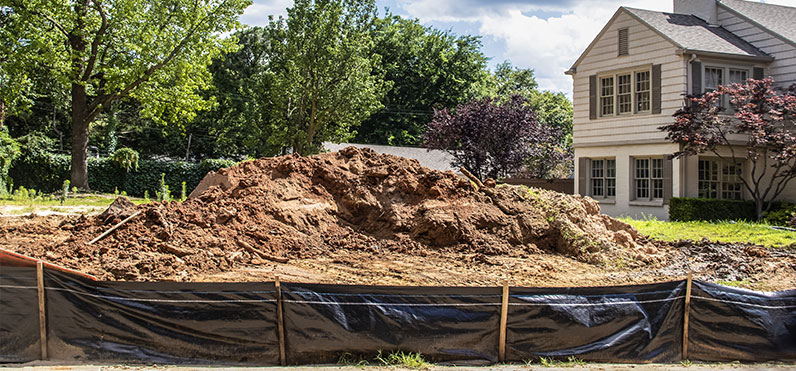Aug 28 2020
Massachusetts zoning law can be a difficult landscape to navigate, particularly when it comes to disputes among neighbors concerning zoning board decisions. A recent opinion by the Massachusetts Supreme Judicial Court in the case of Murchison v. Zoning Board of Appeals of Sherborn cleared up a question about a party’s standing to bring a zoning appeal.
A recent opinion by the Massachusetts Supreme Judicial Court in the case of Murchison v. Zoning Board of Appeals of Sherborn cleared up a question about a party’s standing to bring a zoning appeal.
In looking at the Murchison decision, it is helpful to know the fundamentals of zoning appeals. An appeal of a zoning decision is governed by a Massachusetts Statute, General Laws Chapter 40A, section 17 (“Section 17” for short). A zoning decision is typically the grant or denial of a special permit or a variance, but it also encompasses other decisions by a local zoning board of appeals and by any other local “special permit granting authority.” Under the rules set forth in Section 17, the zoning decision can be appealed in court. The appeal is “de novo,” meaning “starting anew.” Essentially, the appeal a full-blown lawsuit with discovery and a trial before a judge (there is no jury trial in a Section 17 appeal). At trial, the parties are not limited to the information presented to the zoning board. Instead, the parties may, if they choose, present new facts, new witness testimony, new expert opinions, etc. that were not presented to the zoning board.
There are two fundamental issues in every zoning appeal. First is whether the party bringing the appeal has standing. To establish standing, the appealing party must convince the judge that she or he is a “party aggrieved” by the decision. To meet this burden, the appealing party must show three things: (1) the zoning board’s decision will cause the appealing party a particular harm that does not affect the rest of the community, (2) the harm must be more than minimal, and (3) the harm must be fall within the scope of intended protections under Chapter 40A or the local bylaw. Importantly, the appealing party is not required to prove standing under the “preponderance of the evidence” standard that applies to most civil lawsuits. Instead, the appealing party just has to come forward with “credible evidence.” In other words, the appealing party does not actually have to win on the standing argument. Instead, if the appealing party merely submits “credible evidence” of harm under the three requirements stated above, that is good enough to establish standing. Abutters have a “rebuttable presumption” of standing, and therefore an abutter does not have to submit credible evidence unless the defending party properly challenges standing.
Second, if, and only if, the appealing party has standing, she or he has the right to challenge the zoning decision on the merits. To defeat the zoning decision, the appealing party must prove that the zoning board exceeded its authority in issuing the permit. What does that mean? The judge must uphold the zoning decision unless the appealing party proves it is “unlawful, unreasonable, whimsical, capricious or arbitrary.” That is a lot of jargon. In practical terms, the judge must decide whether the zoning board followed the rules and acted within its discretion established by Chapter 40A and the local zoning bylaw. In considering the facts presented by the parties, if the judge determines that the zoning board followed the rules and the law, the judge must uphold the zoning decision, even if the judge may have decided differently under the same set of facts.
The issue of standing was the centerpiece of the Murchison decision. In that case, the plaintiffs-homeowners filed an appeal under Section 17 to challenge a permit allowing the construction of a home on an undeveloped lot across the street. The lot complied with the local bylaw’s requirements for lot size and other dimensions, except that the lot did not comply with the bylaw’s minimum width requirement. In other words, the lot was too narrow to be a buildable lot. Despite this deficiency, the local zoning board allowed a permit for building a home (more specifically, a foundation permit) on the lot. In deciding the case, the Court first analyzed whether the plaintiffs had standing to bring the appeal. The plaintiffs argued they were parties aggrieved by the zoning decision because the new home would create overcrowding and increased density, and these are interests protected by the local zoning bylaw. The plaintiffs also argued there would be an increase in lighting, traffic, and noise, which are additional protected interests. The Court disagreed and ruled that the plaintiffs lacked standing because they offered no credible evidence of such harms, and the harms, even if shown by credible evidence, would not be particular to the plaintiffs but would impact the neighborhood generally. Due to the plaintiffs’ lack of standing, they were not allowed to challenge the legality of the permit allowing a home to be constructed on what may have been an unbuildable lot.
The Murchison decision answered a lingering question in the world of Massachusetts zoning appeals: Does an increase in density on a nonconforming lot, without more, qualify as a harm that can be used to establish standing to bring an appeal under Section 17? We now know that the answer is “no.”
A copy of the decision in Murchison v. Zoning Board of Appeals of Sherborn is found here: https://www.mbmllc.com/Murchison-v-Zoning-Board-of-Appeals-of-Sherborn.pdf


